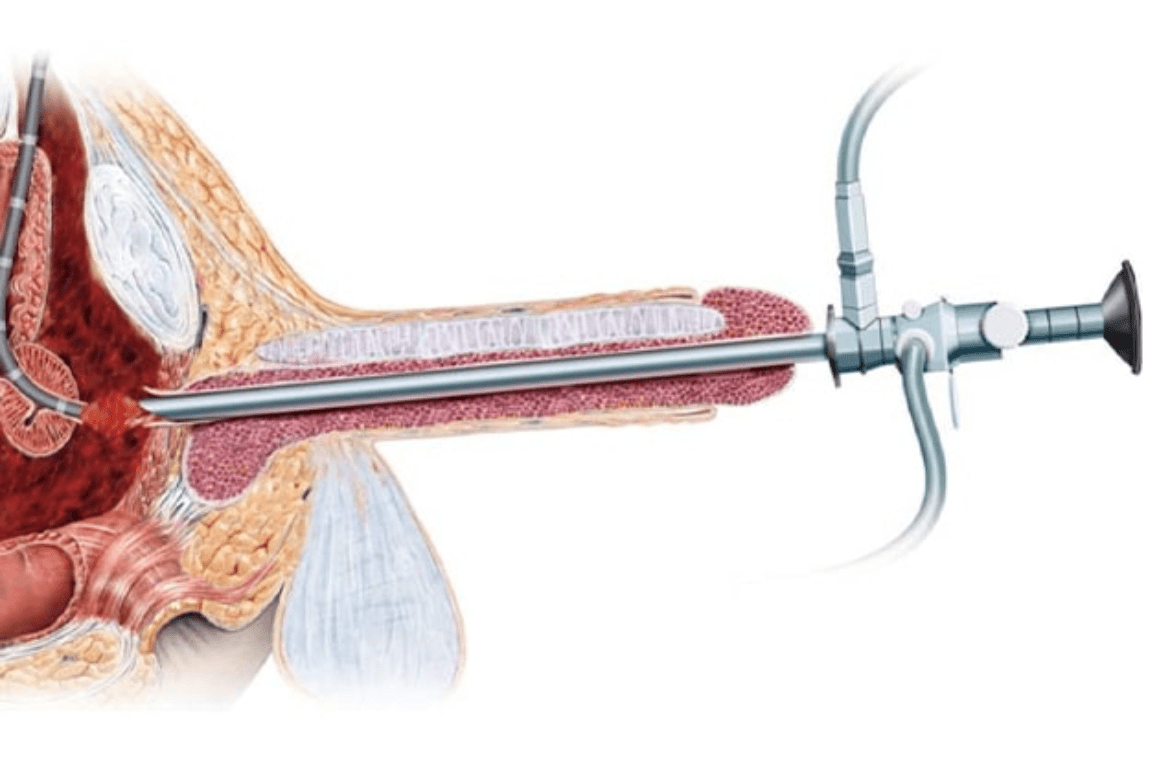A urethral stricture occurs when scar tissue forms within the walls of the urethra. This scar tissue reduces the size of the urethral passageway, resulting in partial or sometimes complete blockage of urine flow.
In normal conditions, the urethra allows smooth passage of urine from the bladder. However, when the passage narrows due to strictures, the flow becomes weak, interrupted, or completely obstructed. Strictures can vary in length—some may involve a small segment of the urethra while others can affect a long portion.
Causes of Urethral Stricture
There are several reasons why strictures develop. The most common causes include:
1. Trauma or Injury
- Pelvic fractures: Accidents, such as road traffic accidents, can injure the urethra.
- Direct injury: Blows or falls on the pelvic area can cause scarring inside the urethra.
2. Medical or Surgical Procedures
- Catheterization: Long-term use of a urinary catheter can irritate the urethra and lead to scarring.
- Endoscopic procedures: Repeated procedures involving the urethra may damage its lining.
3. Infections
- Sexually Transmitted Infections (STIs): Gonorrhea and chlamydia are classic examples of infections that can lead to urethral inflammation and scarring.
- Severe or untreated UTIs: Recurrent urinary tract infections can also damage the urethra.
4. Inflammatory Conditions
- Conditions like lichen sclerosus (a chronic inflammatory skin condition) can cause progressive narrowing of the urethra.
5. Unknown Causes
In many patients, the exact cause is unknown. These are called idiopathic strictures.
Risk Factors
Some people are more prone to developing a urethral stricture:
- Men with a history of STIs
- Individuals who have undergone repeated urethral catheterization
- Those with previous pelvic injuries or surgeries
- People suffering from chronic inflammatory diseases
Symptoms of Urethral Stricture
Symptoms vary depending on how much the urethra is narrowed. Mild strictures may go unnoticed for a long time, whereas severe strictures can cause significant problems. Common symptoms include:
- Weak or slow urine stream: The flow of urine is less forceful than normal.
- Difficulty starting urination: A delay or straining before urine starts to flow.
- Frequent urination: The need to pass urine more often than usual.
- Incomplete bladder emptying: Feeling as if the bladder never empties fully.
- Pain during urination: Burning sensation or pain while passing urine.
- Spraying or split urine stream: The urine stream may appear to spray or split instead of coming out in a straight flow.
- Dribbling after urination: Continued leaking after finishing urination.
- Blood in urine (hematuria): Some patients may notice pink or red urine.
- Recurrent urinary tract infections: Due to poor emptying of the bladder.
- Complete blockage: In severe cases, a person may be unable to urinate at all. This is a medical emergency.
Complications of Untreated Urethral Stricture
If left untreated, a urethral stricture can cause serious complications:
- Repeated UTIs: Due to stagnant urine.
- Bladder stones: Caused by incomplete emptying.
- Bladder damage: Stretching and weakening of the bladder muscles.
- Hydronephrosis: Backflow of urine that affects the kidneys.
- Kidney failure: In very severe, long-standing cases.
Diagnosis of Urethral Stricture
Diagnosis usually involves a combination of patient history, examination, and specialized tests.
- Medical History:
The doctor will ask about symptoms, prior infections, injuries, and any recent procedures involving the urinary tract. - Physical Examination:
The doctor examines for signs of swelling, tenderness, or scarring. - Diagnostic Tests:
- Uroflowmetry: Measures the strength and speed of urine flow.
- Retrograde Urethrogram (RUG): An X-ray using a contrast dye to show the exact site and length of narrowing.
- Cystoscopy: A thin scope with a camera is inserted through the urethra to visualize the narrowing directly.
- Ultrasound or MRI: These may be used in complicated cases to evaluate associated issues like bladder wall thickening.
Treatment Options for Urethral Stricture
The choice of treatment depends on:
- The length and location of the stricture
- Severity of symptoms
- Recurrence of strictures
1. Urethral Dilation
A simple procedure in which special instruments are used to gradually stretch the urethra.
- Pros: Minimally invasive, can be done under local anesthesia.
- Cons: Often temporary; strictures may recur.
2. Direct Vision Internal Urethrotomy (DVIU)
A small surgical cut is made through an endoscope to release the stricture.
- Pros: Minimally invasive, quick recovery.
- Cons: Recurrence is common in longer strictures.
3. Urethroplasty (Open Surgical Repair)
The gold-standard treatment by the best urologists for long or severe strictures.
- The surgeon either removes the scarred section and rejoins the healthy ends (end-to-end anastomosis) or reconstructs the urethra using tissue grafts (often from the inside of the cheek).
- Pros: High long-term success rates.
- Cons: More invasive, requires longer recovery.
4. Catheterization
Temporary placement of a catheter may be necessary in cases of complete blockage to allow urine drainage before definitive treatment.
Post-Treatment Care
- Drink plenty of fluids to keep urine diluted.
- Take prescribed antibiotics to prevent infections.
- Regular follow-up with a urologist to check for recurrence.
- In some cases, intermittent self-catheterization may be recommended to keep the urethra open.
Prevention Tips
While not all strictures can be prevented, certain steps can reduce the risk:
- Practice safe sex to prevent STIs.
- Avoid unnecessary catheterization.
- Treat urinary tract infections promptly.
- Wear protective gear during high-impact activities to reduce the risk of pelvic injury.
Conclusion
Urethral stricture is a serious but treatable condition. The key to managing this problem lies in early detection and timely intervention. If you experience symptoms like a weak urine stream, difficulty passing urine, or frequent urinary infections, consult a urologist without delay.
With proper diagnosis and treatment—whether minimally invasive procedures or reconstructive surgery—most patients recover well and regain a normal quality of life.
FAQs
1. Can a urethral stricture heal naturally?
No. Strictures are caused by scar tissue, which does not disappear on its own. Medical treatment is necessary.
2. What is the most effective treatment for recurrent strictures?
Urethroplasty (open surgical repair) offers the highest success rate, especially for long or complex strictures.
3. Is a urethral stricture life-threatening?
If untreated, it can lead to kidney damage and other serious complications, but with proper treatment, it is manageable.



